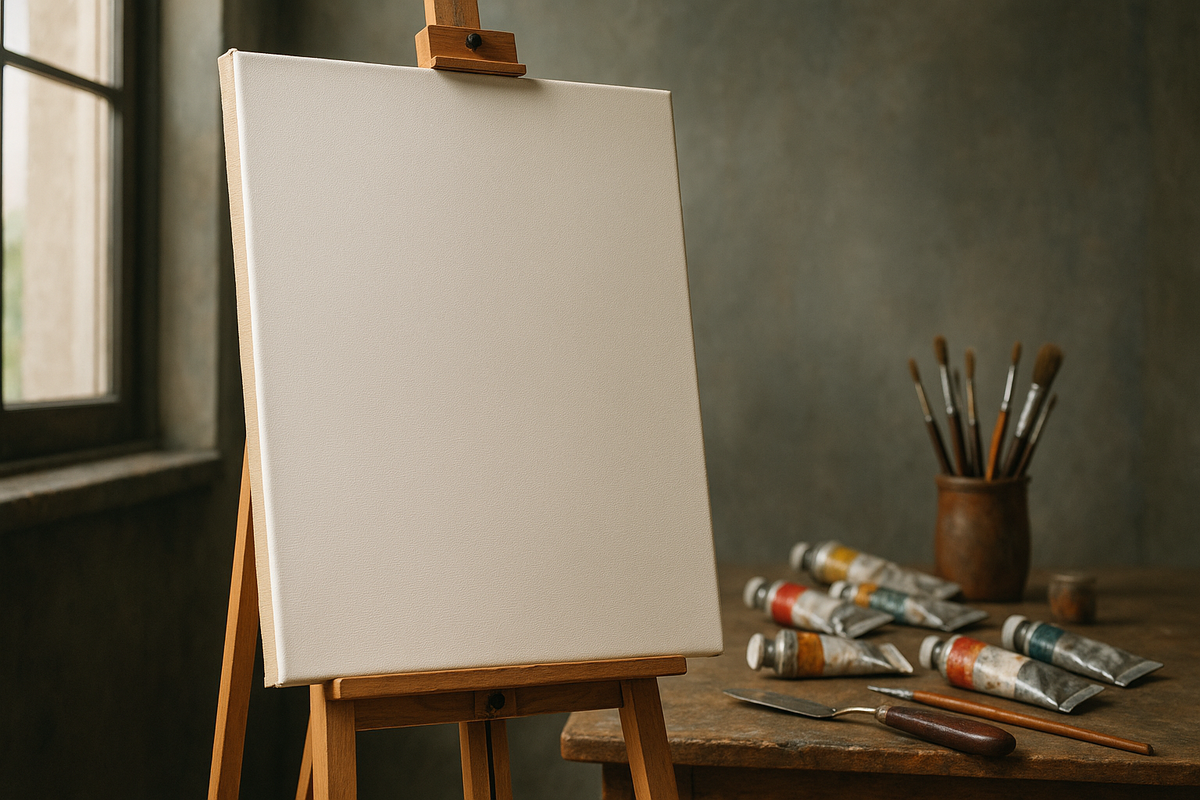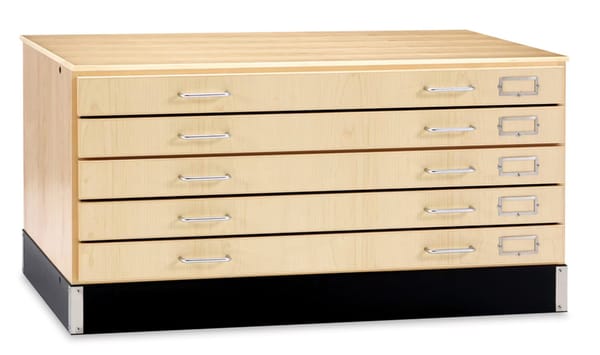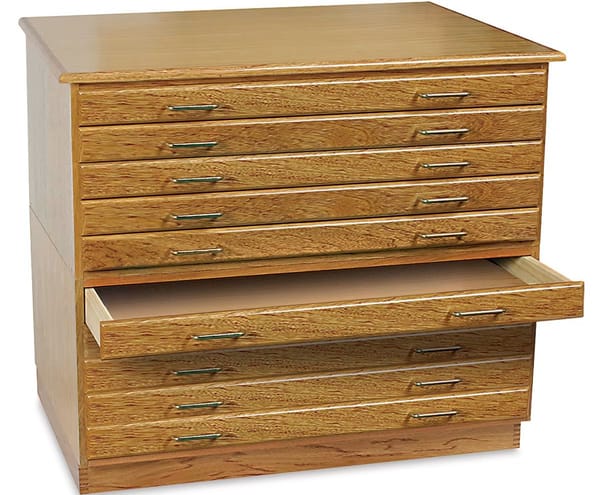Oil Primed Linen Canvas: Is It Worth the Upgrade?

Oil primed linen canvas often feels like a quiet upgrade that changes how color sits, how edges behave, and how paintings age across many years. The fabric and ground work together in ways that become clearer as painting habits move toward slower, layered methods. This guide follows the main questions painters raise when they compare oil-primed linen with acrylic-primed linen and cotton supports.
What Is Oil-Primed Linen Canvas?
Oil primed linen canvas is linen fabric coated with an oil-based ground that creates a smooth, low-absorbent surface suited to traditional oil painting. The linen fibers sit under cured oil ground instead of acrylic gesso, so oil paint meets a compatible layer that does not drink oil too quickly. This change in ground shifts absorbency, surface feel, and paint behavior in quiet but important ways.
On oil-primed linen, colors remain closer to the surface and often dry with richer, more even saturation. Brush marks feel firmer and more controlled, since the ground resists deep soaking. Compared with acrylic-primed linen and cotton canvas, the overall surface usually feels smoother, less chalky, and more stable over time.
Why Do Painters Use Oil-Primed Linen Canvas?
Painters use oil-primed linen canvas because it offers richer color, smoother blending, cleaner edges, and stronger long-term support than most cotton or acrylic-primed surfaces. Tough linen fibers and oil ground behave predictably across sessions. That consistency helps layered, careful work feel calmer and more controlled over time.
Low Absorbency for Rich, Even Color
Low absorbency in oil-primed linen keeps more oil and pigment near the surface, so colors dry richer and more even. First layers do not sink sharply into the ground. Midtones and darks usually keep their depth, and glazes remain visible across skin, fabric, and atmosphere.
Smoother Surface for Blending and Glazing
A smoother, harder ground on oil-primed linen lets thin paint films glide gently, so blends and glazes form steady, predictable transitions. Soft gradients in skies, folds, and faces often need fewer passes. Transparent layers stay clear instead of catching on rough texture.
Better Control for Edges, Details, and Fine Brushwork
Oil-primed linen supports sharper edges and finer detail because brush marks sit on the surface instead of sinking into the weave. Lines, accents, and small textures stay clear and readable. Soft edges also fade with control when an area needs both crisp focus and gentle blur.
Stronger Base for Layered or Classical Oil Techniques
Oil-primed linen provides a stronger base because tough linen fibers and compatible oil ground support layered and classical oil techniques over time. Underpainting, mid-layers, and glazes each meet a firm, even surface. This stability matters when paintings grow slowly and carry many lean and fat mixtures.
Reduced Risk of Sinking, Patchiness, and Dull Spots
Oil-primed linen lowers the risk of sinking and patchiness because the ground absorbs less oil, so tones and sheen stay more even. Dark passages often hold strength instead of drying flat and gray. Medium choices still affect gloss, yet the ground behaves consistently and reduces sudden dull spots.
What Are the Types of Oil Primed Linen Canvas?
Types of oil-primed linen canvas differ mainly by weave and priming thickness, so each surface offers a distinct balance between texture, smoothness, and control. Weave affects how strongly the thread pattern shows through paint. Priming layers shift how slick, sealed, and firm the ground feels under the brush.
Fine Weave Oil Primed Linen
Fine weave oil-primed linen has tight threads and smooth surface, so it suits portraits, realism, and glaze-heavy work needing delicate transitions. Thin paint shows minimal canvas pattern. Close viewing of faces and small objects remains refined.
Medium Weave Oil Primed Linen
Medium weave oil-primed linen offers light texture with moderate smoothness, so it supports mixed styles that combine detail, glazing, and broader brushwork. The weave appears gently under thin passages. The surface becomes a flexible studio choice.
Rough Weave Oil Primed Linen
Rough weave oil-primed linen shows strong texture and clear thread patterns, so it suits bold strokes, impasto passages, and expressive mark-making. Thick paint breaks across the ridges. Large, dramatic pieces often gain strength from this surface.
Double-Primed vs. Triple-Primed Linen
Double-primed linen carries two ground layers and leaves slightly more tooth and softness, so many painters enjoy it for flexible, mixed techniques. Triple-primed linen adds a third layer, so surfaces feel smoother and less absorbent for thin, precise glazes.
When Oil Primed Linen Canvas Is Worth the Upgrade
Oil-primed linen feels worth the upgrade when painting methods rely on slow development, layered color, careful edges, and long-term stability in finished work. In those settings, the surface acts like quiet studio infrastructure rather than simple luxury. Several recurring working patterns gain particular value from this type of canvas.
If You Paint Slowly or in Layers
Slow or layered painting benefits from oil-primed linen because each stage rests on a firm, low-absorbent ground that stays very predictable between sessions. Underpainting and adjustments change gently, not sharply. This steadiness supports planning and long projects.
If You Sell Original Art or Take Commissions
Selling originals or commissions often feels safer on oil-primed linen because the premium, durable support reassures collectors about long-term stability. Stretcher, fabric, and ground together show structural care. That impression builds trust in the work.
If You Want a Surface That Lasts for Decades
Painters who want canvases that age slowly often choose oil-primed linen because strong fibers and oil ground resist sagging, warping, and early breakdown. Tension usually stays more stable than cotton. With sane paint thickness and storage, the structure remains sound for decades.
If You Work in Realism, Classical Techniques, or Portraiture
Realism, classical methods, and portraiture benefit from oil-primed linen because these approaches depend on fine edges, smooth glazes, and subtle value shifts under close viewing. Thin films layer over even ground. Strong fabric and priming support this detailed scrutiny.
If You Need Better Edge Control and Subtle Blends
Painters needing better edge control and subtle blends often gain from oil-primed linen because its smooth, low-absorbent ground supports precise transitions. Hard edges stay narrow and clean. Soft edges extend gently for clouds, fabrics, and skin.
When You Might Not Need Oil Primed Linen Canvas
Oil-primed linen may not feel necessary when work centers on quick studies, texture experiments, tight budgets, or early style exploration. Good cotton canvases, panels, or acrylic-primed linen already cover practice needs. Full benefits appear once methods stabilize.
How to Paint on Oil Primed Linen Canvas
Painting on oil-primed linen usually involves lean early layers, gentle brush pressure, and patient drying times that match the firm, low-absorbent surface. The process often feels calm and steady rather than forceful. Many painters follow a simple sequence that repeats across different works.
- Step 1: Initial Surface and Possible Toning - The first stage often includes a brief look at the surface and a decision about a toned ground. A thin, lean wash can soften the bright white and support value judgment.
- Step 2: Drawing or Simple Block-In - The next stage frequently uses lean, diluted paint to mark main shapes and values. The smooth priming allows clear lines and simple massing without heavy drag.
- Step 3: Establishing Main Color Areas - Slightly thicker paint then sets the main color areas and larger value steps. Because absorbency stays low, hues remain visible and stable after the first dry-down.
- Step 4: Building Layers and Glazes - Subsequent layers refine form, temperature, and texture through opaque passes and glazes. The ground supports thin veils of color that blend gently into earlier work.
- Step 5: Final Accents and Surface Balance - Final accents and small adjustments then unify edges and sheen. Highlights, dark accents, and soft transitions settle into a coherent surface that reflects the chosen method.
Caring for Oil Primed Linen Canvas
Caring for oil-primed linen focuses on stable climate, gentle handling, and thoughtful timing, so the fabric and ground stay strong over many years. Storage conditions, dust control, tension, and varnish choices all influence how the surface ages. Simple, steady habits often bring the best results.
Storing Unused Linen and Finished Paintings
Unused oil-primed linen and finished paintings stay safest in dry, stable rooms with moderate temperature and gentle protection from light and pressure. Rolls, panels, and stretched canvases usually rest upright or flat with a little spacing between them. Clean wrapping materials reduce scuffs and dents in the firm primed ground.
Protecting the Surface From Humidity & Dust
Protection from humidity and dust keeps both linen fibers and the oil film stable over time. Steady humidity limits repeated tightening and relaxing of the fabric. Light covers and soft airflow reduce dust settling on tacky or sensitive areas before varnish.
When to Re-Tighten or Re-Stretch
Re-tightening or re-stretching helps when ripples, sagging, or strong seasonal movement appear in the canvas field. Small stretcher key adjustments often ease mild slackness. More serious distortion sometimes needs careful re-stretching to restore even tension and protect the paint film.
Varnishing Considerations
Varnishing works best after the oil painting fully cures, so the hardened film accepts an even, protective layer safely. A removable varnish can balance sheen and shield the surface from dust and light contact. Some painters use retouch varnish on sunken areas first, while others wait for one final finishing coat.
Final Verdict: Is Oil Primed Linen Canvas Worth It for Serious Oil Painters?
Oil-primed linen canvas often proves most valuable for serious oil painters who favor layered methods, subtle control, and long-term stability in finished pieces.
- Realism, portraiture, and classical techniques gain richer color, smoother blends, and finer edge control.
- Slow, layered projects rest on a predictable, durable support that behaves consistently across sessions.
- Collectors and clients receive paintings on a premium surface that supports long life and stable presentation.
- Quick studies, heavy experiments, or strict budgets may still rely comfortably on good cotton or acrylic-primed canvases.
Frequently Asked Questions About Oil Primed Linen Canvas
Why Is Oil-Primed Linen More Expensive Than Normal Linen?
Oil-primed linen costs more because high-grade linen, multiple priming layers, careful drying, and strict quality control add significant labor, time, and material expense.
Is Oil Primed Linen Only for Professionals?
Oil-primed linen is not limited to professionals; dedicated hobbyists also use it when they value control, longevity, and a premium surface for important work.
Can Beginners Use Oil Primed Linen?
Beginners can use oil-primed linen if budgets allow, especially when there is interest in realism, layering, and keeping certain early paintings for many years.
Do I Need to Tone Oil Primed Linen?
Toning is optional; many painters prefer a mid-value wash for easier value judgment, while others keep the white ground for bright, luminous color schemes.
Can You Use Acrylic Paint on Oil Primed Linen?
Acrylic paint usually does not bond well to oil-primed linen, since traditional practice avoids acrylic over oil due to potential long-term adhesion problems.
How Long Does Oil Primed Linen Last?
Oil-primed linen can last many decades under stable climate and gentle handling, because strong linen fibers and oil ground resist sagging, warping, and early decay.
Which Weave Is Best for Portraits or Realism?
Fine or smooth medium weave suits portraits and realism best, since small texture supports precise edges, subtle blends, and detailed drawing without strong surface interference.




